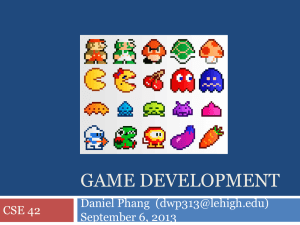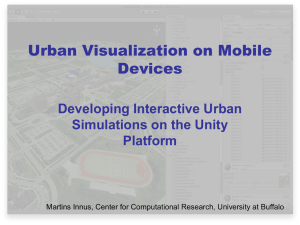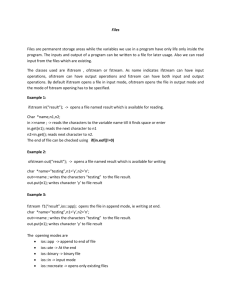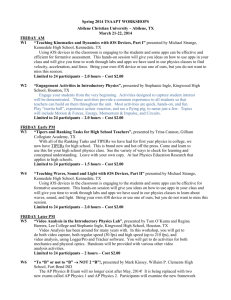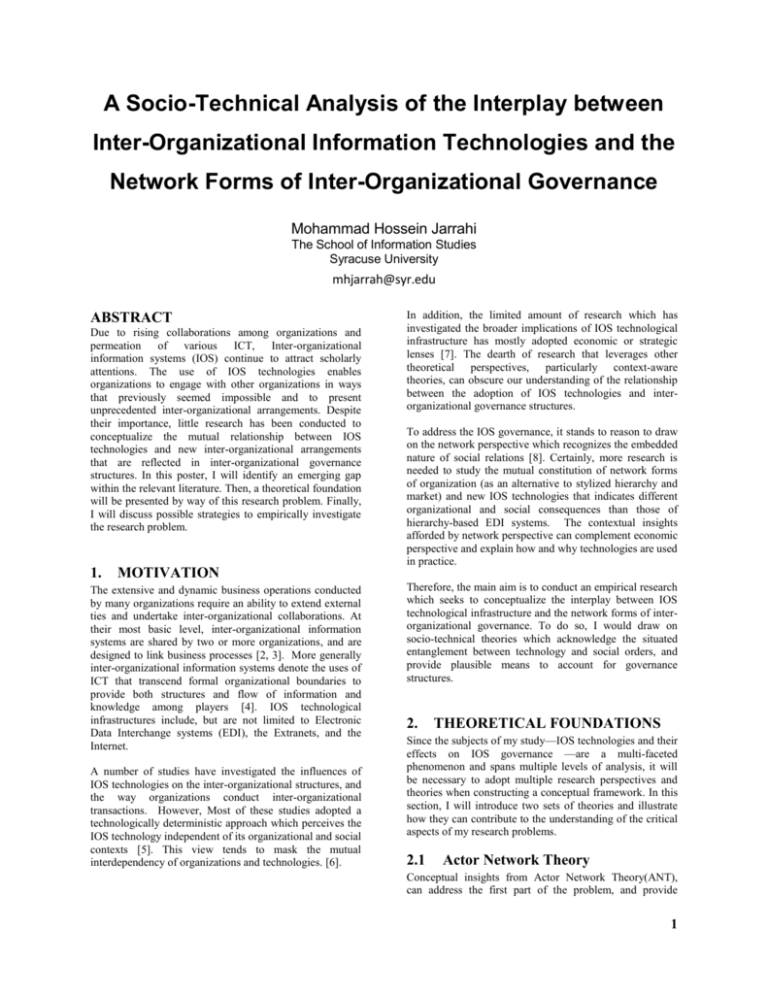
A Socio-Technical Analysis of the Interplay between
Inter-Organizational Information Technologies and the
Network Forms of Inter-Organizational Governance
Mohammad Hossein Jarrahi
The School of Information Studies
Syracuse University
mhjarrah@syr.edu
ABSTRACT
Due to rising collaborations among organizations and
permeation of various ICT, Inter-organizational
information systems (IOS) continue to attract scholarly
attentions. The use of IOS technologies enables
organizations to engage with other organizations in ways
that previously seemed impossible and to present
unprecedented inter-organizational arrangements. Despite
their importance, little research has been conducted to
conceptualize the mutual relationship between IOS
technologies and new inter-organizational arrangements
that are reflected in inter-organizational governance
structures. In this poster, I will identify an emerging gap
within the relevant literature. Then, a theoretical foundation
will be presented by way of this research problem. Finally,
I will discuss possible strategies to empirically investigate
the research problem.
1.
MOTIVATION
The extensive and dynamic business operations conducted
by many organizations require an ability to extend external
ties and undertake inter-organizational collaborations. At
their most basic level, inter-organizational information
systems are shared by two or more organizations, and are
designed to link business processes [2, 3]. More generally
inter-organizational information systems denote the uses of
ICT that transcend formal organizational boundaries to
provide both structures and flow of information and
knowledge among players [4]. IOS technological
infrastructures include, but are not limited to Electronic
Data Interchange systems (EDI), the Extranets, and the
Internet.
A number of studies have investigated the influences of
IOS technologies on the inter-organizational structures, and
the way organizations conduct inter-organizational
transactions. However, Most of these studies adopted a
technologically deterministic approach which perceives the
IOS technology independent of its organizational and social
contexts [5]. This view tends to mask the mutual
interdependency of organizations and technologies. [6].
In addition, the limited amount of research which has
investigated the broader implications of IOS technological
infrastructure has mostly adopted economic or strategic
lenses [7]. The dearth of research that leverages other
theoretical perspectives, particularly context-aware
theories, can obscure our understanding of the relationship
between the adoption of IOS technologies and interorganizational governance structures.
To address the IOS governance, it stands to reason to draw
on the network perspective which recognizes the embedded
nature of social relations [8]. Certainly, more research is
needed to study the mutual constitution of network forms
of organization (as an alternative to stylized hierarchy and
market) and new IOS technologies that indicates different
organizational and social consequences than those of
hierarchy-based EDI systems. The contextual insights
afforded by network perspective can complement economic
perspective and explain how and why technologies are used
in practice.
Therefore, the main aim is to conduct an empirical research
which seeks to conceptualize the interplay between IOS
technological infrastructure and the network forms of interorganizational governance. To do so, I would draw on
socio-technical theories which acknowledge the situated
entanglement between technology and social orders, and
provide plausible means to account for governance
structures.
2.
THEORETICAL FOUNDATIONS
Since the subjects of my study—IOS technologies and their
effects on IOS governance —are a multi-faceted
phenomenon and spans multiple levels of analysis, it will
be necessary to adopt multiple research perspectives and
theories when constructing a conceptual framework. In this
section, I will introduce two sets of theories and illustrate
how they can contribute to the understanding of the critical
aspects of my research problems.
2.1
Actor Network Theory
Conceptual insights from Actor Network Theory(ANT),
can address the first part of the problem, and provide
1
balanced insights into how IOS technologies and human
actors are mutually and emergently productive of one
another [6]. ANT theorizes technological networks as
embracing not only the human actors but also the physical
artifacts and the concepts to which those actors relate [e.g.,
9, 10]. At the heart of ANT lies the concept of generalized
symmetry which implies that all the heterogeneous
elements of a network, both human and non-human, can be
explained in the same terms.
Breaking away from social and technological deterministic
views, ANT provides precedents for understanding the
contribution of both humans and artifacts to the innovation
processes. It explains how certain technology constructs the
identity of the other actors by making the latter act in
accordance with its wishes. Therefore, ANT does not
assume an a priori relationship between the social and the
technical. Latour [10] notes that they can only be
understood as inseparable and situated relationships
between various human and non-human actors. Therefore,
based on the ANT conception, IOS technology should not
be considered a set of tools to be used to accomplish some
tasks, but are constitutive of both practices and identities.
2.2
Institutional Theories
The Scott‘s [11] layered model of institutions and their
environments can account for the second pillar of the
research problem which is concerned with the interorganizational governance structure. This model has a
strong resonance with the network perspective.
Scott and Davis [11] - inspired by open-system theorypropose a multi-layer model which directs attentions to
events and processes external to organizations [See
Figure1]. Among proposed levels, organizational
populations, and organizational field are deemed relevant to
my study.
Organization populations are defined as
aggregates of organizations that are similar in some respect.
They are clusters of organizations that produce similar
products and survive, operate in similar institutional
environments and shared the same normative, cognitive and
regulatory structures [12]. Organization fields are
collections of diverse types of organizations engage in
competitive and cooperative relations. The notion of
organizations fields essentially exhibits a higher level of
environments than organization populations, and denotes
structures that are collectively beneficial, improving
adoption to the environment for all its members.
Organizational field
Organizational
Populations
Organization
ANT is argued to be sensitive to more micro interactions
[13]. As such, the handicap of ANT (regarding broader
consequences) can be offset by more macro analyses
afforded by Scott’s model, which can incorporate IOS
effects at inter-organizational level. Finally, institutional
view on environmental forces can explain how
organizational and inter-organizational contexts shape the
uses of IOS artifacts in lower levels. To this end, it relates
the organizations or industry structures to ongoing actions
of social actors [14].
3.
SITES SELECTION
There are different plausible ways to select the cases for my
proposed study. The following table showcases the
disparate combinations based on the two major elements of
the research question.
Table 1. Different site selection strategies
Governance
structure
IOS Technological
infrastructure
Same
Different
Same
1
2
Different
3
4
Both option 2 and option 3 look viable for addressing the
research questions. Barley [15] has used strategy 2, and
studied how an identical CT scanner technology has
produced structuring processes and differing forms of
organizations in two radiology departments. However, I
argue that option 3 could serve my research question better.
Leonardi and Barley [16] contend that since the mid-1980s
researchers have adopted research designs that compare the
use of identical or similar technologies in different context
to highlight the role that social context play in shaping the
technological consequences. They argue that the agenda of
socio-technical researchers should instead turn into the
opposite approach: comparing radically different
technologies in the same or similar context.
To this end, I would like to study different IOS
technologies in similar contexts of inter-organizational
arrangement that are compatible with our definition of the
network form of governance. Within such settings, longterm relationships are sustained while no central point of
authority governs them.
This Multiple-case design should include multiple networkoriented inter-organizational settings that share a great deal
of commonalties. The cases should also include a
2
Figure 1: organizational environment (Adapted from
[1])
constellation of organizations as IOS governance typically
includes more than one organization. As Barley asserts:
“Not only are organizations suspended in multiple,
complex, and overlapping webs of relations, but the webs
are likely to exhibit structural patterns that are invisible
from the perspective of a single organizations caught in the
tangle. To detect overarching structure, one has to rise
above the individual firm and analyze the system as a
whole.” [17 , p. 321 ]
[5]
4.
[7]
CONCLUSION
I argue that little is known about the nature and inherent
influences of IOS technologies on the inter-organizational
governance structure. Hence, explicit considerations of
inter-organizational structures and their possible
interactions with the IOS artifacts could heighten our
understanding about the social and the technical aspects of
inter-organizational information systems.
The theoretical frameworks for studying the research
problem seem insightful enough to capture the relationships
between macro structures and micro dynamics. Through the
concept of symmetry, ANT recognizes the fact that IOS
technologies are both the products and the shapers of
human actions. In this light, our main argument is that
viewing technology as fixed artifacts that are to be
distributed throughout society impedes understanding, and
therefore managing, the often necessary process of mutual
adaptation of the social and the technical. In addition, the
institutional view directs attentions to macro structures and
processes, and hence complements ANT by integrating
broader levels of analysis.
5. REFERENCES
[1]
[2]
[3]
[4]
M. W. Chiasson, and E. Davidson, “Taking
industry seriously in information systems
research,” Mis Quarterly, vol. 29, no. 4, pp. 591605, 2005.
J. Y. Bakos, “A strategic analysis of electronic
marketplaces,” Mis Quarterly, pp. 295-310, 1991.
J. I. Cash, and B. R. Konsynski, “IS redraws
competitive boundaries,” Harvard Business
Review, vol. 63, no. 2, pp. 134-142, 1985.
M. L. Markus, C. W. Steinfield, R. T. Wigand et
al., “Industry-wide IS Standardization as
Collective Action: The Case of the US
Residential Mortgage Industry,” Mis Quarterly,
vol. 30, no. 2, pp. 439–465, 2006.
[6]
[8]
[9]
[10]
[11]
[12]
[13]
[14]
[15]
[16]
[17]
D. Robey, G. Im, and J. D. Wareham,
“Theoretical Foundations of Empirical Research
on Interorganizational Systems: Assessing Past
Contributions and Guiding Future Directions,”
Journal of the Association for Information
Systems, vol. 9, pp. 497-518, 2008.
W. J. Orlikowski, and S. Scott, “
Sociomateriality: Challenging the Separation of
Technology, Work and Organization ” The
Academy of Management Annals, vol. 2, pp. 433474, 2008.
K. Crowston, and M. D. Myers, “Information
technology and the transformation of industries:
three research perspectives,” Journal of strategic
information systems, vol. 13, no. 1, pp. 5-28,
2004.
J. M. Podolny, and K. L. Page, “Network forms
of organization,” Annual review of sociology, vol.
24, no. 1, pp. 57-76, 1998.
M. Callon, “Actor-network theory: the market
test,” Actor network theory and after, pp. 181195, 1999.
B. Latour, Reassembling the social: an
introduction to actor-network-theory: Oxford
University Press, USA, 2005.
W. R. Scott, and G. F. Davis, Organizations and
organizing: Rational, natural, and open system
perspectives: Pearson Prentice Hall, 2007.
W. R. Scott, Institutions and organizations: Sage,
2001.
D. A. Howcroft, and N. N. Mitev, “M. Wilson
(2004),‘What we May Learn from the Social
Shaping of Technology Approach,’” Social
Theory and Philosophy for Information Systems,
pp. 329-371, 2004.
A. Giddens, The constitution of society: Polity
Press Cambridge [Eng, 1984].
S. R. Barley, “Technology as an occasion for
structuring: Evidence from observations of CT
scanners and the social order of radiology
departments,” Administrative science quarterly,
pp. 78-108, 1986.
P. M. Leonardi, and S. R. Barley, “Materiality
and change: Challenges to building better theory
about technology and organizing,” Information
and Organization, vol. 18, no. 3, pp. 159-176,
2008.
S. R. Barley, J. Freeman, and R. C. Hybels,
“Strategic
alliances
in
commercial
biotechnology,” Networks and organizations:
Structure, form, and action, pp. 311-347, 1992.
3


